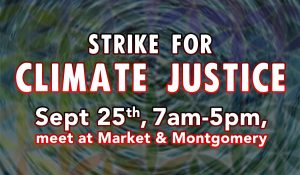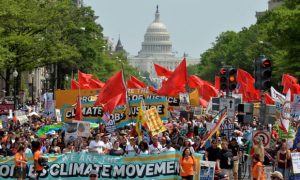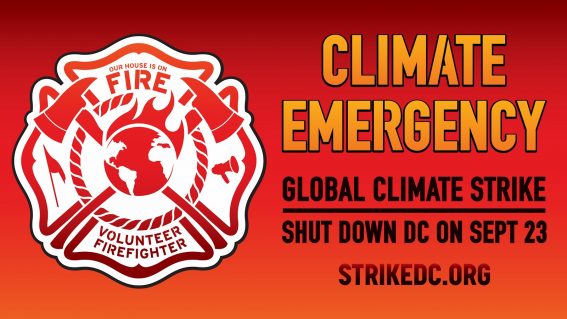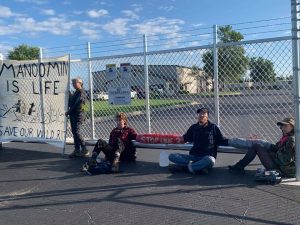Cross-posted from Diablo Rising Tide
This September, millions of people will take collective action to demand climate justice.
Join us in San Francisco for a mass non-violent direct action on September 25th to confront the corporations and governments responsible for this crisis.
Wednesday Sept 25th: Direct Action – 7am at Montgomery & Market in downtown San Francisco
RSVP for the action!
DISRUPT: THE CLIMATE WRECKERS IN THEIR CORPORATE SUITES: We have identified and will take nonviolent direct action to disrupt key locations of climate of corporations, financial institutions and government offices along or near Montgomery St.We’re asking affinity groups to take nonviolent direct action and disrupt these locations.
CREATE: SOLUTIONS IN THE STREETS: We will paint 20 circular street murals of solutions to climate chaos and injustice along Montgomery St., together with music and popular education about solutions, transforming “Wall St West” (Montgomery St) into a positive vision of solutions. There is a Bay Area tradition of large scale community street murals for climate justice, culminating last Sept in 50 street murals of solutions in the streets around SF Civic Center.
We are asking affinity groups–and mural teams from our communities–to commit to one mural. Music and education is also encouraged along the streets.
SUSTAIN: We will not just show up for an hour or two, but like other catalytic climate justice actions around the world. We will sustain our action for the full workday, beginning at 7am and continuing to 5pm. The public is invited to join us.
The first KICK OFF MEETNG for the September 25th “Strike for Climate Justice” will be September 4th at the Omni Commons in Oakland. Details here.
Read the full Call to Action here.
Initiated by Idle No More SF Bay, Extinction Rebellion SF Bay, Diablo Rising Tide, 1000 Grandmothers for Future Generations, and the Society of Fearless Grandmothers
For more info: https://www.climatejusticesf.org/






